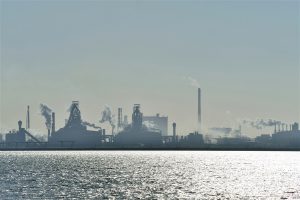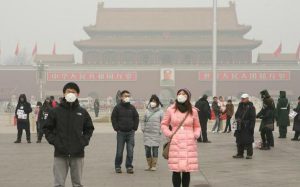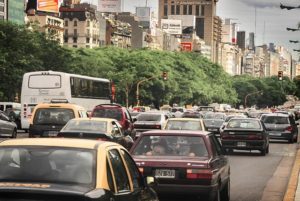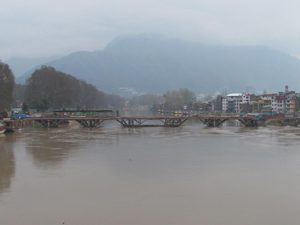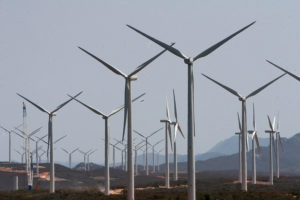An environmental group has filed a 30 million yuan (US$4.8 million) lawsuit to seek compensation from a Shandong chemical company for pumping out harmful substances, which is thought to be the first public interest litigation for air pollution under China’s new environmental law.
On Wednesday, the Intermediate People’s Court in the Shandong city of Dezhou accepted to hear a lawsuit requesting compensation for air pollution from Dezhou Jinghua, which makes chemicals for use in the glass industry.
Victims of the smog that plagues many industrialised parts of China are unable to sue those responsible, due to the difficulty of calculating the amount of financial damages from air pollution.
The All-China Environmental Federation (ACEF), which brought the lawsuit, is basing the potential amount of damages on an offending company’s operating costs, in the hope this will provide a route to successful public interest litigation.
Ma Yong, deputy head of ACEF’s Environmental Legal Services Center, explained that such cases are indeed rare, due to difficulties in gathering evidence and assessing damages.
“Companies such as this, which refuse to change despite repeated warnings, can only be dealt with through the courts,” Ma said.
If awarded, the compensation would be paid to the Dezhou city government and ringfenced for dealing with air pollution.
First public interest lawsuit on air quality
Environmental lawyer Liu Jinmei told chinadialogue that this was the first public interest case over air pollution she had heard of.
In February 2014 a resident of Shijiazhuang, one of China’s most polluted cities, tried to sue the environmental authorities because he was unable to identify a particular company responsible for toxic air quality.
This was the first attempt to sue government officials over air pollution in China, and local courts refused to hear the case.
Ma Yong said an ACEF investigation found that Dezhou Jinghua had for a long time been releasing pollutants including sulphur dioxide and nitrogen oxide in quantities far above those permitted.
Ma explained that judicial interpretation of the new public interest litigation law, which came into effect in January, provides guidance on cases where damages are hard to assess. According to that interpretation, when the environmental damages cannot be calculated, damages can be assessed in line with the company’s operating costs.
May provide a model for future cases
Dezhou Jinghua has saved over 20 million yuan by not installing environmental-protection equipment on a number of production lines, and had also avoided fines that should have been paid for pollution, Ma said.
Hu Jing, a deputy professor at the China University of Politics and Law’s Environment and Resources Law Institute, told the Beijing News that it is very hard to use scientific models to assess the harm caused by air pollution and smog.
However, calculating damages in terms of the operating costs companies have saved by ignoring pollution controls would allow public interest cases to be heard in court and for those who break the law to be punished.
ACEF’s case against Dezhou Jinghua may provide a model for public interest cases filed in response to air pollution, Hu adds.
However ACEF, an umbrella organisation with links to government, isn’t completely separate from corporate interests.
Lawyers who are filing the lawsuit will request that the court orders the defendant to immediately halt breaches of air pollution standards, install more equipment to treat pollution, publish an apology in provincial media, and to pay court, assessment, and legal costs.
According to a report in Beijing News, the company has repeatedly been punished over breaches of pollution law, and was once named and shamed by the Ministry of Environmental Protection during a crackdown prompted by an APEC meeting in Beijing.
An official with the company’s safety and compliance office said that the company is making the required changes, but that these are not complete.
Last year the company invested almost 30 million yuan installing dust and sulphur scrubbers, and adding nitrogen oxide scrubbers would cost a further 20 million yuan.
More litigation expected this year
Ma Yong told chinadialogue that ACEF has already brought three public interest environmental cases this year. On January 13 two were submitted to the Intermediate People’s Court in Dongying, Shandong, with the local environmental protection bureau permitted to support the case.
Yang Xiumei, head of the Dongying Intermediate People’s Court, told the Legal Daily that these two cases are the first in which the environmental authorities have supported a case since the implementation of the new environmental protection law.
Ma added that the new environmental protection law, and a judicial interpretation from the Supreme People’s Court on handling of environmental public interest lawsuits, had changed the outlook for such litigation. In 2013 the ACEF submitted eight cases, and not one accepted by the courts.
Another eight were brought in 2014, with six accepted. “With the new environmental protection law we’ll be bringing more cases this year, with more help from the environmental authorities,” Ma said.
On January 1, the day the new law came into effect, environmental NGOs Friends of Nature and Fujian Green Home brought the first public interest case, termed the ‘Nanping Environmental Destruction Case‘ under the new law.
Zhang Boju, secretary-general of Friends of Nature, told the media that while NGOs hoped to help implement the new system, they lack funding and support.
Therefore Friends of Nature set up a fund for those bringing such cases, with support from the Alibaba Foundation.
Zhang added that due to financial limitations, the fund was currently focusing on help with pre-litigation costs.
He went on to say that of the 700 or so environmental groups nationwide authorised to bring litigation, most that have a government background were not keen to do so.
In all, only a dozen or more civil society groups have both the ability and will to file lawsuits, Zhang said.

